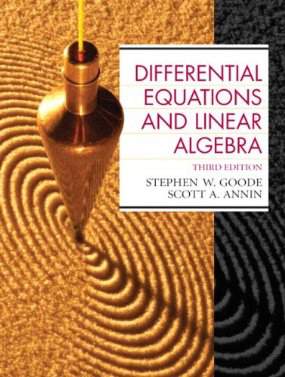Connecting...

This is a quick preview of the lesson. For full access, please Log In or Sign up.
For more information, please see full course syllabus of Differential Equations
For more information, please see full course syllabus of Differential Equations
Differential Equations Undetermined Coefficients of Inhomogeneous Equations
Lecture Description
In this lesson, our instructor Will Murray discusses undetermined coefficients of inhomogeneous equations.
Bookmark & Share
Embed
Share this knowledge with your friends!
Copy & Paste this embed code into your website’s HTML
Please ensure that your website editor is in text mode when you paste the code.(In Wordpress, the mode button is on the top right corner.)
×
Since this lesson is not free, only the preview will appear on your website.
- - Allow users to view the embedded video in full-size.
Next Lecture
Previous Lecture










































 Answer Engine
Answer Engine






1 answer
Fri Oct 16, 2015 2:06 PM
Post by Ahmed Alzayer on October 15, 2015
Greetings Dr. Murray,
If I have the following differential equation, what would be the right guess for the particular solution?
x"+16x = (80t-16)sin(4t)
2 answers
Mon May 18, 2015 12:00 PM
Post by Bahaa Jabbar on May 16, 2015
hi prof., thanks for your great explanation, and I have question! what if I have y"-2y'-3y=3te^(2t)
as I was solving it you way I got to this point where 2Ae^(2t)-3Ate^(2t)=0 (solving for A)
and I don't know how finish this question?
1 answer
Thu Apr 10, 2014 7:53 PM
Post by YILEI GE on April 9, 2014
Hi, prof. Murray. How this problem will solved "y''=t^3"? what is the particular part for this one? Thanks
Lei
3 answers
Tue Jan 14, 2014 11:42 AM
Post by Joel Fredin on January 1, 2014
Murray,
I have a differential equation y''-2y'+2y=e^x*Cos(x). I think the homogeneous one is easy to solve. But for the particular one i have no clue. Can i write y_p=Ae^x(BCos(x)+CSin(x)) and then just take the derivative twice. Plug it into the the equation and then solve it. But if that's the case i don't know which one is equal to which one. It's much easier with plus and minus to right side of the equal sign.
Would be really nice if you could help me out a little. Thanks for your time,
Joel
1 answer
Thu Oct 31, 2013 3:27 PM
Post by michael morris on October 23, 2013
Prof. Murray,
Can you please briefly explain the process of solving systems of linear DE's by elimination. I do not understand the process and i have an exam on fri. There are no videos online to reference.Any help will be appreciated.